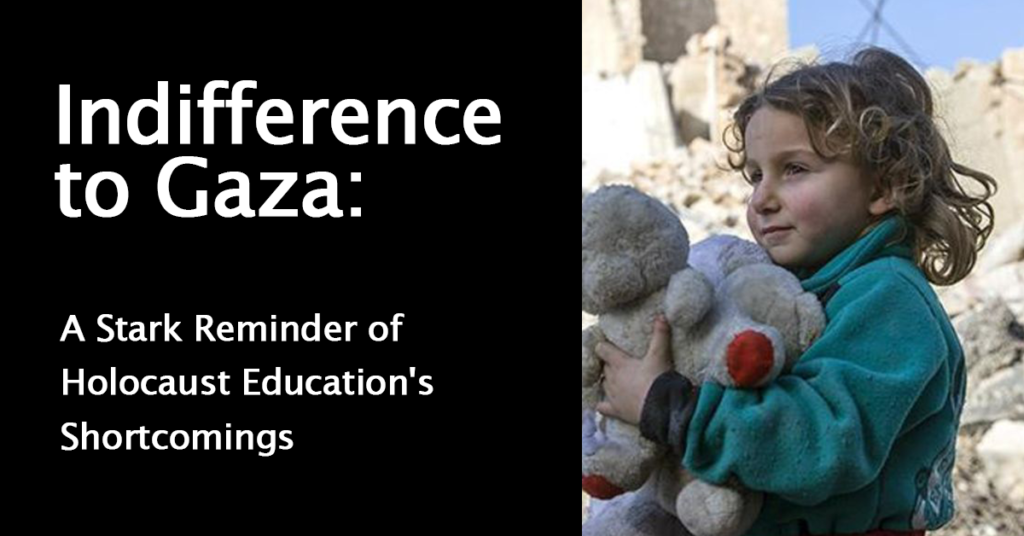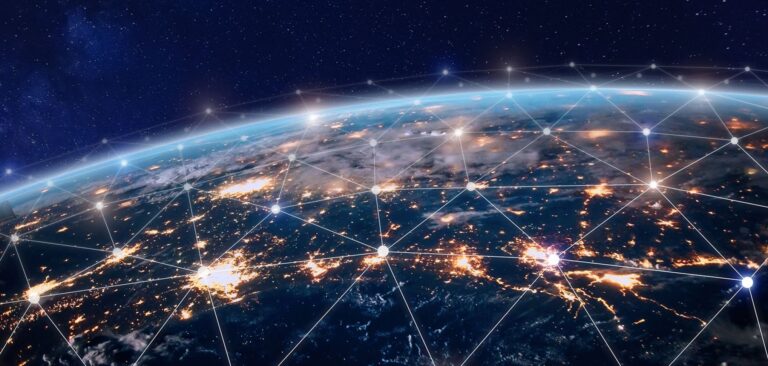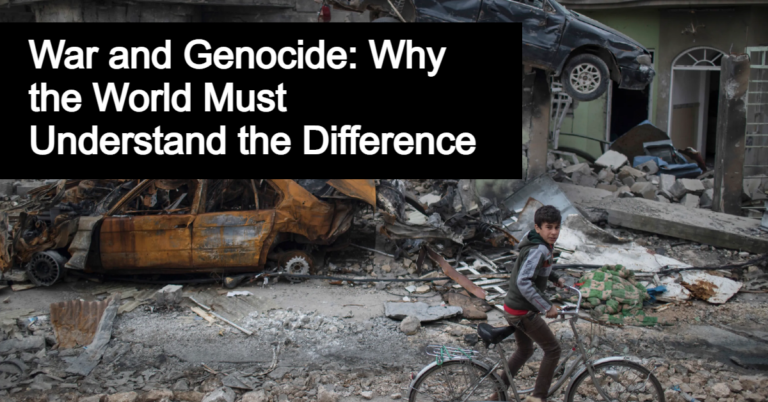
Holocaust education, designed to ensure that the atrocities of the 20th century’s most infamous genocide are never repeated, has long been considered a moral and educational imperative worldwide. Yet, as we look at the unfolding crisis in Gaza, a stark and troubling question arises: How have we arrived at a place where so many are indifferent, accepting, or even celebrating the violence being inflicted on an oppressed population? What we are witnessing is not only a humanitarian catastrophe but also a profound failure of Holocaust education, which was meant to instil empathy, human dignity, and a resolute stand against genocide, ethnic cleansing, and oppression in all its forms.
This article delves into the ways Holocaust education has failed to translate its lessons into the prevention of modern atrocities, particularly in Gaza. It will examine the dynamics of dehumanisation, historical parallels, the complexity of memory, and the role of international actors in perpetuating or resisting the current situation.
The Promise of Holocaust Education: “Never Again” for All
Holocaust education emerged in the aftermath of the Second World War with a singular goal: to prevent future genocides and atrocities by ensuring that the world would never forget the lessons of the Holocaust. The slogan “Never Again” encapsulated the hope that humanity would learn from the past and never allow such barbarity to be inflicted on any group of people. In classrooms, museums, and memorials across the world, students and citizens alike have been taught about the horrors of Auschwitz, Treblinka, and the Warsaw Ghetto.
At the core of Holocaust education is the universal message that human suffering, dehumanisation, and systemic violence must never be tolerated, regardless of the victim’s identity. These teachings emphasise the dangers of unchecked hatred, state-sponsored violence, and the silence or complicity of bystanders. The suffering of Jews during the Holocaust is meant to stand as a warning for the future—not just for Jewish people, but for all humanity.
Yet, in Gaza today, we see a stunning disconnect between these lessons and reality. As homes are bombed, children killed, and families torn apart, much of the world watches with indifference, while some express outright support for the devastation. How has it come to this, and what does it say about the effectiveness of Holocaust education when so many fail to see the parallels between the suffering in Gaza and the tragedies we swore to never repeat?
The Gaza Crisis: A Modern Humanitarian Catastrophe
The Gaza Strip, a small and densely populated region, has been under blockade by Israel since 2007, when Hamas took control of the territory. This blockade has resulted in severe restrictions on the movement of goods and people, crippling the economy and creating one of the worst humanitarian crises in the world. For years, Gaza has been described as an “open-air prison,” with over two million Palestinians living in dire conditions, cut off from basic necessities such as clean water, electricity, and medical supplies.
The situation escalates during periods of violent conflict, when Israeli military operations often result in high civilian casualties. The most recent hostilities, triggered by long-standing grievances over land, rights, and statehood, have seen airstrikes decimate entire neighbourhoods, leaving countless civilians dead and thousands displaced. In the face of this destruction, some international voices have expressed support for Israel’s actions, citing its right to defend itself. Meanwhile, the Palestinian narrative—of a people struggling under occupation and enduring collective punishment—is often marginalised or ignored.
Dehumanisation: A Perennial Danger
One of the most important lessons of the Holocaust is the danger of dehumanisation. Before the gas chambers were built, before the mass executions were carried out, the Nazi regime engaged in a relentless campaign to strip Jews, Romani people, disabled individuals, and others of their humanity. Propaganda depicted Jews as vermin, a plague on society. This dehumanisation made it easier for the general population to accept, and even participate in, their systematic extermination.
In Gaza, we see similar processes of dehumanisation at work. Palestinians are often depicted in certain media outlets and political discourse as terrorists, radicals, or an existential threat. The constant portrayal of an entire population through the lens of extremism allows for their suffering to be dismissed. The deaths of Palestinian children in airstrikes are downplayed as collateral damage, rather than as the tragic loss of innocent lives.
Social media has exacerbated this dehumanisation, with online platforms filled with posts celebrating or mocking the suffering of Palestinians. This normalisation of hatred is a chilling reminder of how far we have drifted from the moral lessons Holocaust education was supposed to teach. When the humanity of an entire group is erased, their suffering becomes tolerable, even justifiable.
Historical Parallels: From Warsaw to Gaza
The comparison between the Warsaw Ghetto and Gaza is one that has sparked significant debate. While the historical contexts are undeniably different, there are haunting similarities in the dynamics of oppression, isolation, and violence. The Warsaw Ghetto, established by the Nazis in 1940, confined hundreds of thousands of Jews to a small, walled-off area of Warsaw, Poland. The conditions were appalling: starvation, disease, and death were rampant. The ghetto was not only a physical prison but also a psychological and cultural one, designed to break the spirit of its inhabitants.
Gaza, though not a ghetto in the historical sense, shares many of these characteristics. Its people are physically confined by barriers, deprived of resources, and subjected to repeated episodes of military violence. The blockade, much like the walls of the Warsaw Ghetto, serves as a tool of control and dehumanisation. And just as the world largely ignored the plight of those trapped in Warsaw, much of the international community turns a blind eye to the suffering in Gaza.
This is not to suggest that the situations are identical. The Holocaust was a genocide, while the situation in Gaza, however brutal, has not reached that level of systematic extermination. But the core dynamics—of a powerful state using its military and economic might to subjugate a weaker, confined population—resonate across both historical periods. And it is precisely these resonances that Holocaust education should make us attuned to. Instead, many have drawn arbitrary distinctions, as if the suffering of Palestinians somehow does not count in the moral calculus of “Never Again.”
The Complexity of Memory: Selective Remembrance
One of the challenges of Holocaust education is the selective nature of historical memory. The Holocaust has become a symbol of Jewish suffering, but its lessons are meant to be universal. However, in many parts of the world, including Israel, the memory of the Holocaust has been weaponised to justify oppressive policies rather than to prevent them.
Israeli leaders frequently invoke the Holocaust as a rationale for the state’s military actions, portraying Israel as perpetually on the brink of annihilation. This narrative fosters a siege mentality, in which any action—no matter how brutal—is justified in the name of survival. In this framework, Palestinians are cast as enemies, not victims, and the state’s use of overwhelming force is seen as a necessary defence against another potential Holocaust.
This selective use of Holocaust memory distorts its true purpose. Rather than a call to resist all forms of oppression, it becomes a tool to rationalise state violence. Holocaust education was supposed to teach us that the suffering of one group must lead to solidarity with all oppressed people, not the selective application of empathy.
International Complicity: The Role of the Global Community
Another critical failure of Holocaust education lies in the role of the international community. During the Holocaust, much of the world remained silent as millions were murdered. Today, many governments and international bodies fail to take meaningful action to stop the violence in Gaza. Some countries actively support the Israeli government, providing military aid and political backing. Others offer only muted criticism or symbolic gestures, unwilling to challenge the status quo.
This passivity mirrors the global response to the Holocaust, when nations refused to open their borders to Jewish refugees and failed to intervene to stop the mass killings. The lesson of international complicity was supposed to be clear: Silence in the face of atrocity makes one an accomplice. And yet, here we are again, with much of the world either endorsing the violence or standing idly by as civilians suffer.
A Call for a New Understanding of “Never Again”
The ongoing crisis in Gaza forces us to confront the uncomfortable truth that Holocaust education, as it is currently practised, has failed to instil the moral clarity needed to prevent modern atrocities. The indifference, acceptance, and even celebration of what is being done to the people of Gaza is a betrayal of the universal message that the Holocaust was supposed to teach: that no group should ever be dehumanised, brutalised, or annihilated, regardless of their identity or circumstances.
To honour the true legacy of Holocaust education, we must expand our understanding of “Never Again.” It cannot be a phrase that applies only to certain groups or certain times. It must be a universal call to resist oppression, stand against dehumanisation, and demand justice for all people, including the Palestinians in Gaza. Only then can we truly say that we have learnt the lessons of the past and are committed to building a more just and humane future.
Citations: Gaza and the Humanitarian Crisis:
- B’Tselem. “Gaza Strip: Israel’s obligations under international law.” B’Tselem – The Israeli Information Center for Human Rights in the Occupied Territories. Retrieved from https://www.btselem.org/gaza_strip.
- United Nations Office for the Coordination of Humanitarian Affairs (OCHA). “Gaza Strip: Humanitarian Impact of the Blockade.” OCHA Reports. Retrieved from https://www.ochaopt.org.
Holocaust Education and the Lessons of “Never Again”:
- United States Holocaust Memorial Museum. “Why We Remember the Holocaust.” Holocaust Encyclopedia. Retrieved from https://encyclopedia.ushmm.org/content/en/article/why-we-remember-the-holocaust.
- Bauer, Yehuda. “The Failure of ‘Never Again’: Lessons From the Holocaust in the Face of Modern Atrocities.” Yad Vashem. Retrieved from https://www.yadvashem.org.
The Gaza-Israel Conflict:
- Bishara, Marwan. “The Real Issue Behind Gaza’s Latest War.” Al Jazeera. Retrieved from https://www.aljazeera.com/opinions/2021/5/19/the-real-issue-behind-gazas-latest-war.
- Pappé, Ilan. The Ethnic Cleansing of Palestine. Oneworld Publications, 2006.
Dehumanisation and Its Dangers:
- Mamdani, Mahmood. When Victims Become Killers: Colonialism, Nativism, and the Genocide in Rwanda. Princeton University Press, 2001.
- Arendt, Hannah. The Origins of Totalitarianism. Harcourt, Brace, 1951.
International Complicity and the Role of Governments:
Falk, Richard. “Palestinian Resistance and International Law: Unlawful Occupation, Apartheid, and the Road Ahead.” Journal of Palestine Studies, vol. 47, no. 4, 2018, pp. 10-26.
Chomsky, Noam. Gaza in Crisis: Reflections on Israel’s War Against the Palestinians. Haymarket Books, 2010.
















